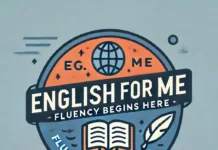Here are examples of the alphabet and how each letter represents different sounds in words:
Spelling Proficiency: Understanding letter sounds aids in spelling. It allows individuals to spell words phonetically, breaking them down into their constituent sounds and then representing those sounds with the appropriate letters.
Vocabulary Growth: Proficiency in letter sounds contributes to vocabulary development. By recognizing letter patterns and sounds, individuals can better understand and learn new words more easily.
1. **A** – “Apple” (the letter ‘A’ sounds like /æ/ as in “cat”).
2. **B** – “Ball” (the letter ‘B’ sounds like /b/ as in “bat”).
3. **C** – “Cat” (the letter ‘C’ sounds like /k/ as in “kite” or /s/ as in “cent”).
4. **D** – “Dog” (the letter ‘D’ sounds like /d/ as in “door”).
5. **E** – “Elephant” (the letter ‘E’ sounds like /ɛ/ as in “bed” or /i/ as in “me”).
6. **F** – “Fish” (the letter ‘F’ sounds like /f/ as in “fish”).
7. **G** – “Goat” (the letter ‘G’ sounds like /ɡ/ as in “goat” or /dʒ/ as in “giraffe”).
8. **H** – “House” (the letter ‘H’ sounds like /h/ as in “house”).
9. **I** – “Ice” (the letter ‘I’ sounds like /aɪ/ as in “ice” or /ɪ/ as in “in”).
10. **J** – “Jump” (the letter ‘J’ sounds like /dʒ/ as in “jump”).
11. **K** – “Kite” (the letter ‘K’ sounds like /k/ as in “kite”).
12. **L** – “Lion” (the letter ‘L’ sounds like /l/ as in “lion”).
13. **M** – “Moon” (the letter ‘M’ sounds like /m/ as in “moon”).
14. **N** – “Nest” (the letter ‘N’ sounds like /n/ as in “nest”).
15. **O** – “Octopus” (the letter ‘O’ sounds like /ɑ/ as in “hot” or /oʊ/ as in “go”).
16. **P** – “Penguin” (the letter ‘P’ sounds like /p/ as in “penguin”).
17. **Q** – “Queen” (the letter ‘Q’ sounds like /kw/ as in “queen”).
18. **R** – “Rainbow” (the letter ‘R’ sounds like /r/ as in “rainbow”).
19. **S** – “Sun” (the letter ‘S’ sounds like /s/ as in “sun”).
20. **T** – “Tree” (the letter ‘T’ sounds like /t/ as in “tree”).
21. **U** – “Umbrella” (the letter ‘U’ sounds like /ʌ/ as in “cup” or /juː/ as in “use”).
22. **V** – “Violin” (the letter ‘V’ sounds like /v/ as in “violin”).
23. **W** – “Water” (the letter ‘W’ sounds like /w/ as in “water”).
24. **X** – “Xylophone” (the letter ‘X’ often has two sounds: /ks/ as in “box” or /z/ as in “xylophone”).
25. **Y** – “Yellow” (the letter ‘Y’ sounds like /j/ as in “yellow”).
26. **Z** – “Zebra” (the letter ‘Z’ sounds like /z/ as in “zebra”).
These examples illustrate how each letter in the alphabet can represent different sounds in words, depending on the word and its context within a sentence.









